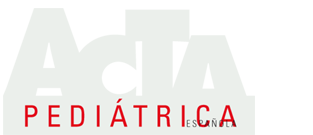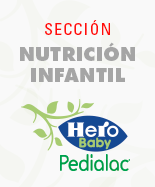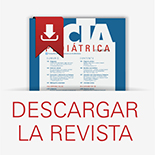Resumen
La prevalencia de desnutrición entre los niños ingresados en una unidad de cuidados intensivos pediátricos (UCIP) se sitúa en alrededor del 15-20%, pese a que se sabe que puede aumentar la morbimortalidad.
Objetivo: Analizar el soporte nutricional de los niños ingresados en una UCIP. Valorar la adecuación de los aportes recibidos a los requerimientos y los motivos de la falta de cumplimiento.
Material y métodos: De los 238 pacientes ingresados durante un periodo de 6 meses, se recogieron los siguientes datos de 40 pacientes que permanecieron ingresados más de 48 horas: filiación, antropometría, características del soporte nutricional y desviaciones sobre el plan de tratamiento. Los requerimientos energéticos se estimaron a partir de la ecuación de Schofield.
Resultados: La edad media al ingreso fue de 10,5 ± 23,5 meses (rango: 3 días a 10 años). El 64% de los pacientes había sido intervenido de una cardiopatía congénita. La duración media del ingreso en la unidad fue de 22,6 ± 24,5 días (rango: 3-112). Cinco pacientes fallecieron durante el ingreso. Tipo de soporte nutricional: 2 niños recibieron nutrición parenteral (NP) exclusiva; 6 NP + nutrición enteral continua (NEC); 16 NEC; 6 NEC + nutrición enteral intermitente (NEI); 3 NEC + alimentación oral; 3 NEI, y 3 otras combinaciones. El grupo tardó como media 2,17 ± 1,06 días en recibir soporte nutricional desde su admisión en la UCIP. El porcentaje de días de estancia durante los cuales los pacientes recibieron los requerimientos estimados varió entre el 16 y el 65%, en función del método de alimentación utilizado. Sólo un pequeño porcentaje (27,5%) de los pacientes recibió un aporte calórico adecuado durante todo el periodo de hospitalización en la unidad.
Conclusiones: Sólo el 27,5% de los niños ingresados en la UCIP recibieron durante el ingreso los aportes estimados. La nutrición enteral, sola o en combinación con otros métodos de alimentación, es la forma de soporte nutricional más empleada. Se precisan protocolos adecuados sobre el soporte nutricional en el paciente en las UCIP para conseguir durante su hospitalización un aporte nutricional óptimo.
Abstract
The prevalence of malnutrition among children admitted to a Pediatric Intensive Care Unit (PICU) is around 15% to 20%, despite the fact that inadequate nutrition can increase morbidity and mortality. We designed this study to evaluate the nutritional support in a PICU and to determine the causes of inadequate nutritional provision over a 6-month period.
Material and methods: The medical records of 40 patients (18 girls, 22 boys), randomly selected from the 238 admissions during the study period, were reviewed. The length of the stay was over 48 hours in every case. The following data were recorded: personal data, anthropometric data, type of nutritional support, time since admission to the PICU, adherence to requirements (Schofield equation) and causes of inadequate nutrient supply. Data are presented as the mean and standard deviation or as a percentage, as appropriate.
Results: The mean age at admission was 10.5 23.5 months (range: 3 days to 10 years). Sixty-four percent of the patients had been admitted after surgical treatment of a congenital heart defect. The mean length of stay in the PICU: 22.6 24.5 days (range: 3 to 112 days). Five patients died during the PICU stay. Type of nutritional support: 2 children received parenteral nutrition (PN) alone; 6, PN plus continuous enteral feeding; 16, continuous drip alone; 6, continuous drip plus bolus feedings; 3, continuous drip plus oral feedings; 3, bolus feedings; and 3, other combinations. On average, NS started 2.17 1.06 days after admission. The percentage of days on which the patients received the estimated requirements ranged between 16% and 65%, depending on the type of NS. Delivery of nutrients was below the prescribed load in 10% of cases. Only 27.5% of the patients received an adequate energy load throughout the entire stay.
Conclusions: Only a small percentage of children admitted to the PICU received adequate nutritional support. Enteral nutrition, alone or in combination with other feeding methods, constitutes the most widely employed feeding technique in the PICU. It is necessary to implement nutritional support algorithms in the PICU to improve these results.















